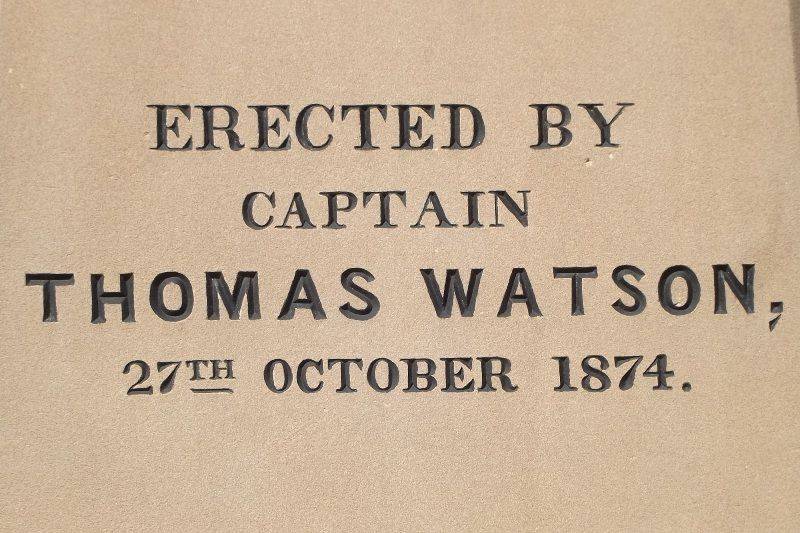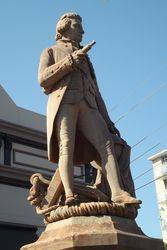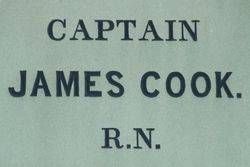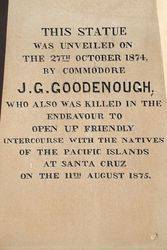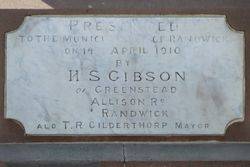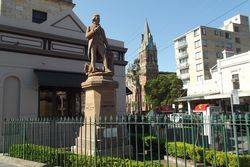
Captain James CookPrint Page 
The statue commemorates Captain James Cook R.N (1728 - 1779). Unveiled in 1874, the statue was presented to the Municipal Council of Randwick by H. S. Gibson in 1910.
This is the first statue erected in New South Wales to Cook. It represents the Colonial wish to commemorate Cook in the 1870s and was erected by Captain Thomas Watson in the grounds of his residence Cooks Lodge on the 27th October 1874 on the anniversary of Cook's birthday. It is an interesting piece of local work, a good piece of statuary and its site on the old road to La Perouse and overlooking Botany Bay is (as Watson intended) historically interesting.
About 12ft in height, on a base of about the same height. Both in Pyrmont sandstone. Situated on a small triangular piece of land surrounded by iron railing set on a sandstone base. Cook is in naval uniform and carrying a telescope, beside him are an anchor and rope, terrestrial globe half draped with a flag and a sextant. The four sides of the base are inscribed with details of Cook`s career and of the donor and of Commodore Goodenough, RN.
James Cook's first Pacific voyage (1768-1771) was aboard the Endeavour and began on 27 May 1768. Cook’s voyage had three aims; to establish an observatory at Tahiti in order to record the transit of Venus (when the planet passed between the earth and the sun), on 3 June 1769. The second aim was to record natural history, led by 25-year-old Joseph Banks. The final secret goal was to continue the search for the Great South Land.
Cook reached the southern coast of New South Wales in 1770 and sailed north, charting Australia’s eastern coastline and claiming the land for Great Britain on 22nd August 1770.
Cook’s third and final voyage (1776-1779) of discovery was an attempt to locate a North-West Passage, an ice-free sea route which linked the Atlantic to the Pacific Ocean. It was on this, Cook's final voyage, that he discovered the Hawaiian Islands in January 1778. This major discovery would lead to his death – Cook was killed on a return visit to Hawaii at Kealakekua Bay, on 14 February 1779.
The first statue erected in any of the Australian colonies of the great circumnavigator and discoverer of Australia-the illustrious Captain Cook-was unveiled at Randwick at 6 o'clock yesterday afternoon, by Commodore Goodenough, R.N., in the presence of a very large number of well known and influential citizens of Sydney. This event was brought to a happy issue through the munificence of one of our oldest citizens, Captain Thomas Watson, who has long been known as an ardent admirer of the celebrated discoverer of this beautiful land, and who can claim the honour of erecting the first, and, at present, only fitting tribute to the memory of Captain Cook. The figure and pedestal are both composed of Pyrmont freestone, and are the work of a colonial artist, Mr. Walter M'Gill, of Sydney.
Empire (Sydney, NSW), 28 October 1874.
Location
| Address: | Avoca Street & Belmore Road, Randwick, 2031 |
|---|---|
| State: | NSW |
| Area: | AUS |
| GPS Coordinates: | Lat: -33.916638 Long: 151.241145 Note: GPS Coordinates are approximate. |
Details
| Monument Type: | Statue |
|---|---|
| Monument Theme: | People |
| Sub-Theme: | Exploration |
| Artist: | Walter McGill (Sydney, NSW) |
Dedication
| Actual Monument Dedication Date: | Tuesday 27th October, 1874 |
|---|
CAPTAIN
JAMES COOK
R. N.
Plaque:
PRESENTED
To The Municipality Of Randwick
On 14 April 1910
By
H. S. GIBSON
Of Greenstead
Allison Rd Randwick
Ald T. R. Gilderthorp Mayor
ERECTED BY
CAPTAIN
THOMAS WATSON
27th OCTOBER 1874.
THIS STATUE
Was Unveiled On
The 27th October 1874,
By Commodore
J. G. GOODENOUGH,
Who Also Was Killed In The
Endeavour To
Open Up Friendly
Intercourse With The Natives
Of The Pacific Islands
At Santa Cruz
On The 11th August 1875


